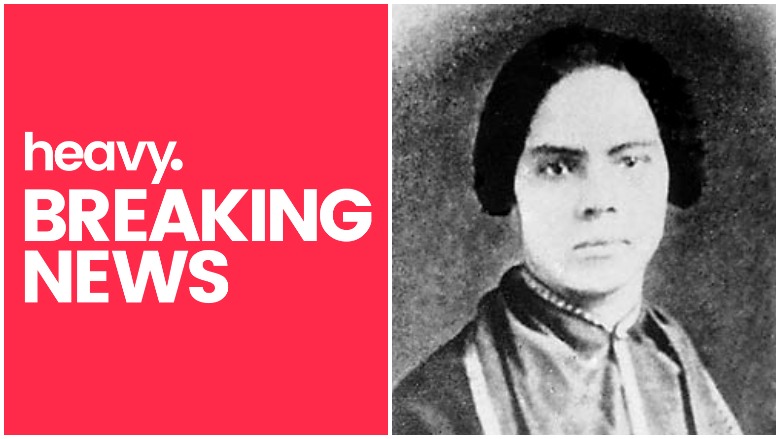
Mary Ann Shadd Cary is the journalist, lawyer and abolitionist who is the subject of the Google Doodle on October 9, which would have been her 197th birthday.
Cary was born in Wilmington, Delaware, to Abraham Doras Shadd and Harriet Burton Parnell, the eldest of 13 children. Cary’s parents were free African Americans and active abolitionists.
Cary began writing after graduating from a Quaker boarding school in Pennsylvania in 1838. Later, Cary would establish a school for African American children in Pennsylvania. Cary emigrated to Canada following the passing of the Fugitive Slave Act, a law that required freed African Americans to return to their slave owners, according to Google’s blog on the doodle. While in Canada, Cary established a newspaper, The Provincial Freeman. In 1870, Cary earned a law degree from Howard University. Cary died in 1893 after a battle with stomach cancer.
In 1994, Cary was recognized in Canada as a Person of National Historic Significance. Sociologist and historian W.E.B Du Bois said of Cary, “Well-educated, vivacious, with determination shining from her sharp eyes, she threw herself single-handed into the great Canadian pilgrimage when thousands of hunted black men hurried northward and crept beneath the protection of the lion’s paw.”
Here’s what you need to know:
1. Cary’s Childhood Home Was a Station for the Underground Railroad
According to the entry on the National Park Service’s website for Cary’s home in Washington D.C., Cary grew up around Underground Railroad activists such as William Still. The entry says that Cary’s childhood home Wilmington, Delaware, was a place of refuge for freed African Americans.
Cary’s family moved from Wilmington to Pennsylvania because at the time it was illegal to educate African American children in Delaware.
2. Cary Once Told Frederick Douglass That in Order to Help African-Americans, ‘We Should Do More & Talk Less’

GettyProtesters march by a photo of Frederick Douglass during a Juneteenth protest and march in honor of Rayshard Brooks and other victims of Police Violence in Boston, Massachusetts on June 22, 2020.
Neely Tucker wrote in a blog on the Library of Congress website that at 25, Cary wrote to Frederick Douglass’ newspaper The Northern Star. Cary was answering Douglass’ call for African Americans to write in and offer suggestions as to what more could be done to help those in slavery. Cary wrote in part, “We should do more and talk less.”
Cary added, “We have been holding conventions for years — we have been assembling together and whining over our difficulties and afflictions, passing resolutions on resolutions to any extent. But it does really seem that we have made but little progress considering our resolves.” Professor Jane Rhodes of the University of Illinois, Chicago, was quoted by The New York Times as saying of the letter, “It was fearless, and it was fierce. She really was unafraid and she carried that throughout her life.”
3. Cary Advocated for Free African Americans to Leave the United States & Settle in Canada
Historian Shirley J. Yee wrote in 1996 that Cary emigrated to Canada in September 1851 and settled in a farming community in Windsor, Ontario. Cary lived in Canada for 11 years. During her time in the country, Cary wrote an essay, “A Plea for Emigration or Notes on Canada West.” In the essay, Cary advocated for free African Americans to move to Canada.
Yee wrote that “Shadd’s activism was as much about her effort to secure a place in the movement as it was about finding a new geographic location for transplanted blacks.” Yee also wrote that Cary’s “strength” in the abolitionist movement was unusual due to the predominately male leadership of the movement. Yee added that Cary “identified integration as a bother a gendered and racialized notion.”
4. Cary’s Husband, Thomas, Died 4 Years After Their Marriage
Cary married a Toronto man named Thomas Cary on January 3, 1856, according to historian Rodger Streitmatter who wrote about Cary as part of his book Raising Her Voice: African American Women Journalists Who Changed History. At the time Cary was 33 and her husband was 46. Streitmatter wrote that the couple met when Thomas Cary donated money to help launch a newspaper that Cary established named The Provincial Freeman. The newspaper debuted in 1853. Thomas Cary advertised his barbershop in the newspaper.
Despite their marriage, Thomas Cary, who had three teenage children from a previous marriage, remained living in Toronto while Cary remained in Chatham, 200 miles apart. The couple had two children of their own together, daughter Sarah and son Linton. Thomas Cary died the same year that his son was born.
5. Cary’s Obituary Was Not Published by the New York Times Until 2018

GettyThe New York Times building is seen on June 30, 2020 in New York City.
Cary’s obituary was published in The New York Times in June 2018, 121 years after her death. The tribute piece was titled, “Overlooked No More: How Mary Ann Shadd Cary Shook Up the Abolitionist Movement.”
The obituary noted that prior to her death in 1893, Cary faded from public life. Professor Jane Rhodes wrote in the foreword of her biography on Cary, Mary Ann Shadd Cary: The Black Press and Protest in the Nineteenth Century, that Cary had not been universally loved in either the suffage or abolitionist movements. Rhodes wrote, “This seeming contradiction — that Shadd Cary would be viewed simultaneously as an object of respect and leadership and as an object of derision, is central to the story of the African-American woman.”
READ NEXT: Former Fans Want TikTok Star Canceled Over ‘Racist’ Video – Watch it Here